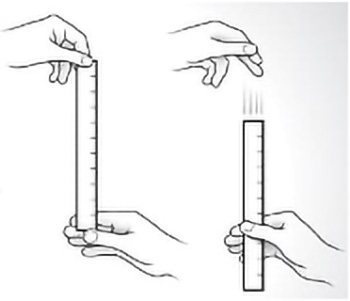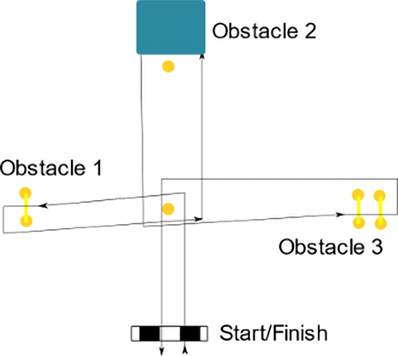The Teacher’s Toolkit is nearly ready, and we can’t wait to share it with you, so here’s a sample, a taster if you like…
This extract covers a wide range of ages, from 10-18 years old, and can be used in a variety of ways, depending on the level of difficulty chosen. Here’s an easy level way to use this activity for a mathematics class, and it can also be combined with a sports class. The topic is statistics and coordination exercises:
Train like an astronaut!
Path 1:
Exercise 1: Train your reflexes and gather data! Work in pairs or small groups.
A student holds a ruler above the hands of another student. This student then has to catch the ruler, whenever the first student lets it drop (without warning!). Note the length of the ruler above the fingers. Repeat this exercise in order to gather some data and be able to define the mean, median etc. Then repeat this exercise again, but do this while the students talk about something else, to have them not solely focused on that one task. Again, gather data by repeating the exercise a few times. Then add more modifications (e.g., watching a video/movie, etc.).
Use these different sets of data about the same basic exercise to compare different data sets by comparing means and so on.

Exercise 2: Use the “coin toss and catch” exercise (place coins on the back of your hand, throw them into the air and try to catch all of them before they hit the ground) to train reflexes, and gather data by counting the number of drops when using one, two or more coins (note: this is a loud exercise when a lot of students do it at the same time). Then use the data to compare means.
Exercise 3: Set up an agility course, e.g. as seen in the image below and time the runs of the different students. Find means, median, etc. The example shown is similar to a military agility and speed course. More details will be given in the activity description.

Exercise 4: Stand on one leg. With your eyes closed! Your partner times you. Do it a few times on each leg to gather data to be able to compare the times between legs and between students.
Connection to the curriculum (Austria):
Competence area (KB) 4, for 1st-4th grade lower level (or 5th-8th grade), 10-14 years: “Data and chance are becoming increasingly important in the information age. Parameters and diagrams of descriptive statistics are used for orientation and decision-making. The concept of probability is fundamental to the quantification of security. “
For the AHS (high school)l:
- 5th grade: “Being able to deal with approximate values in a meaningful way.”
- 6th grade: Descriptive statistics, probability (knowing and being able to work with representations and key figures of descriptive statistics)
For physical education in lower grades: Competence area of self-competence (e.g. “Pupils can perceive their own athletic performance in relation to athletic demands and realistically assess it with regard to further athletic development.”)
NOTE: Make sure the exercises you choose can include everyone, without fear of humiliation, and moderate activities appropriately!!
